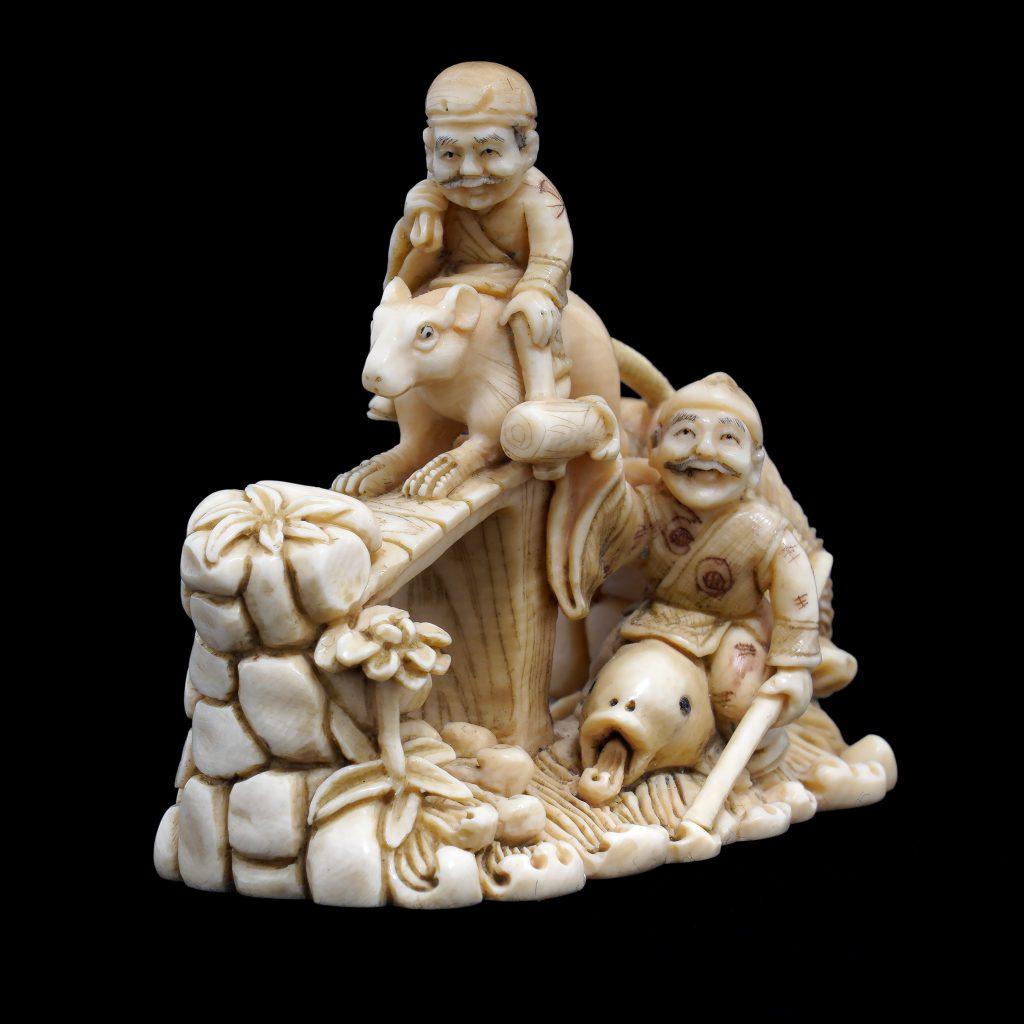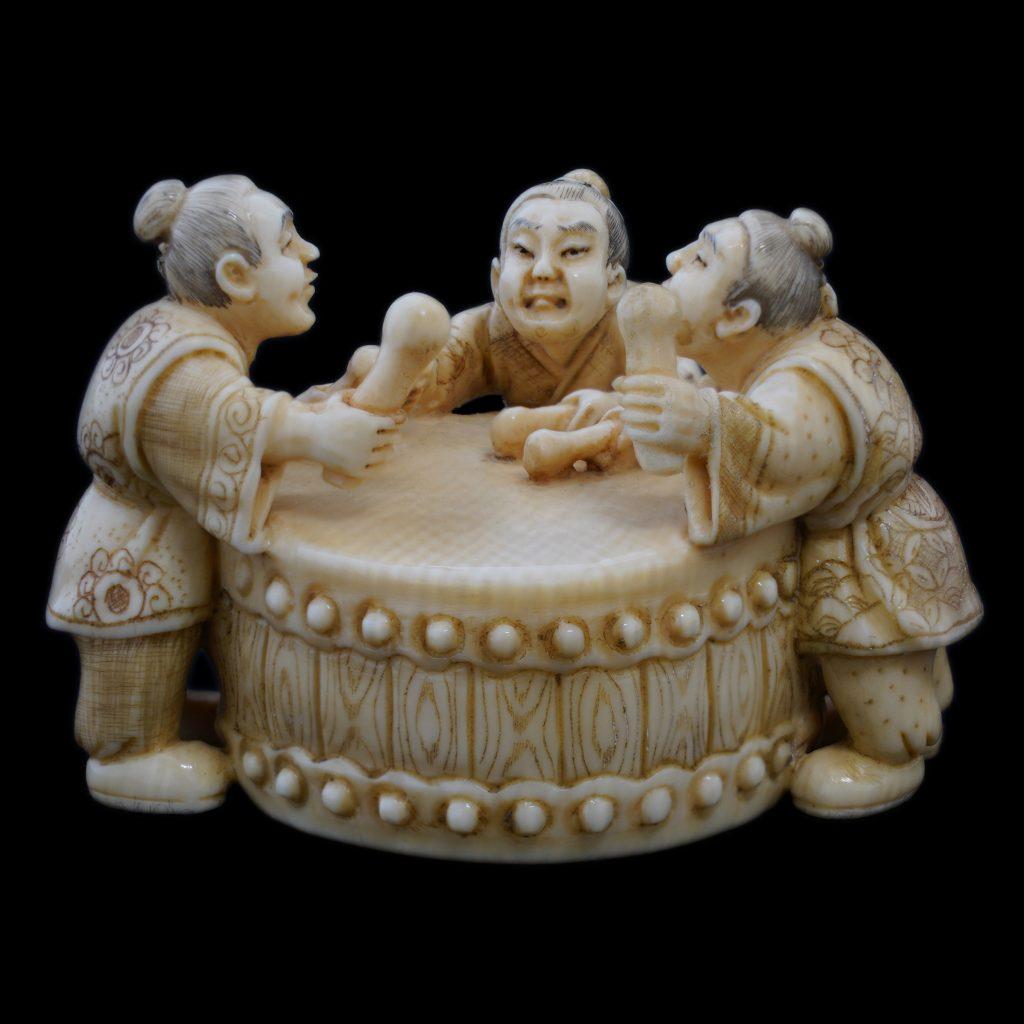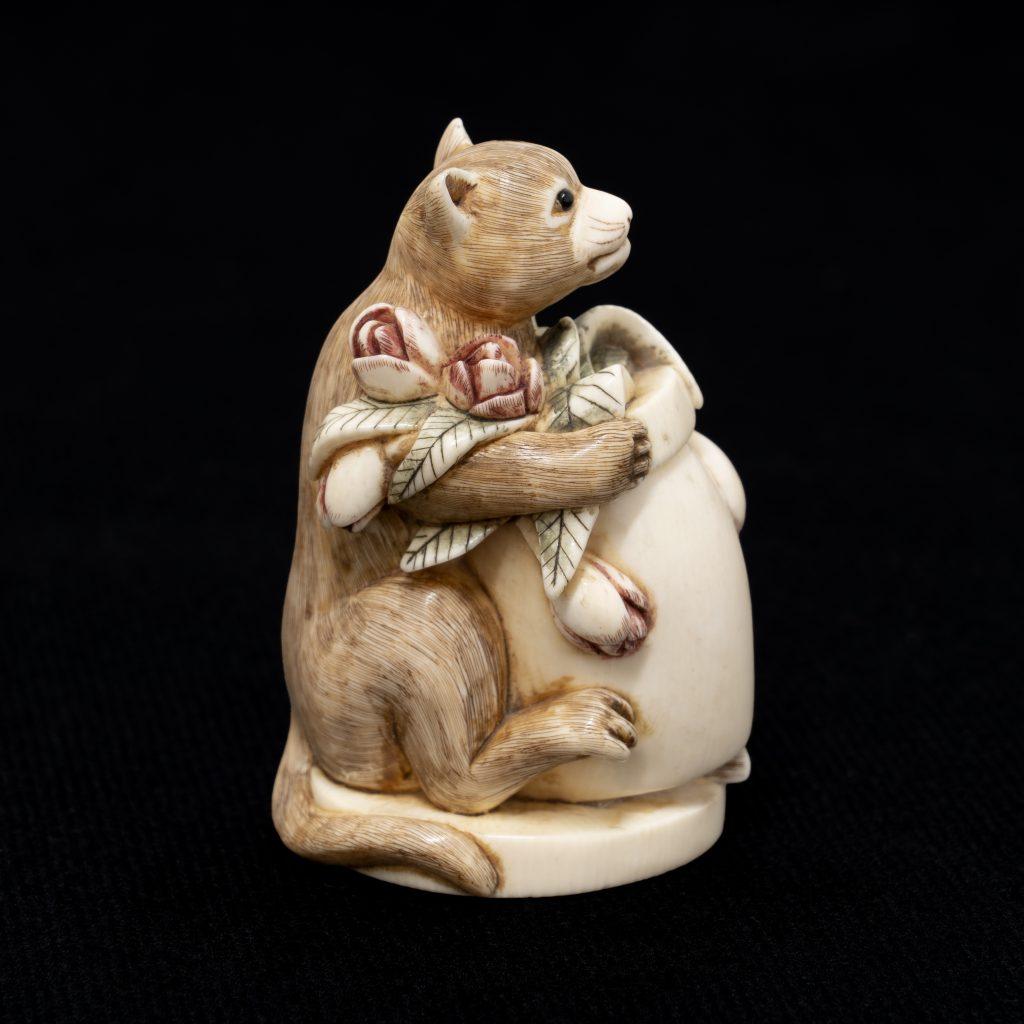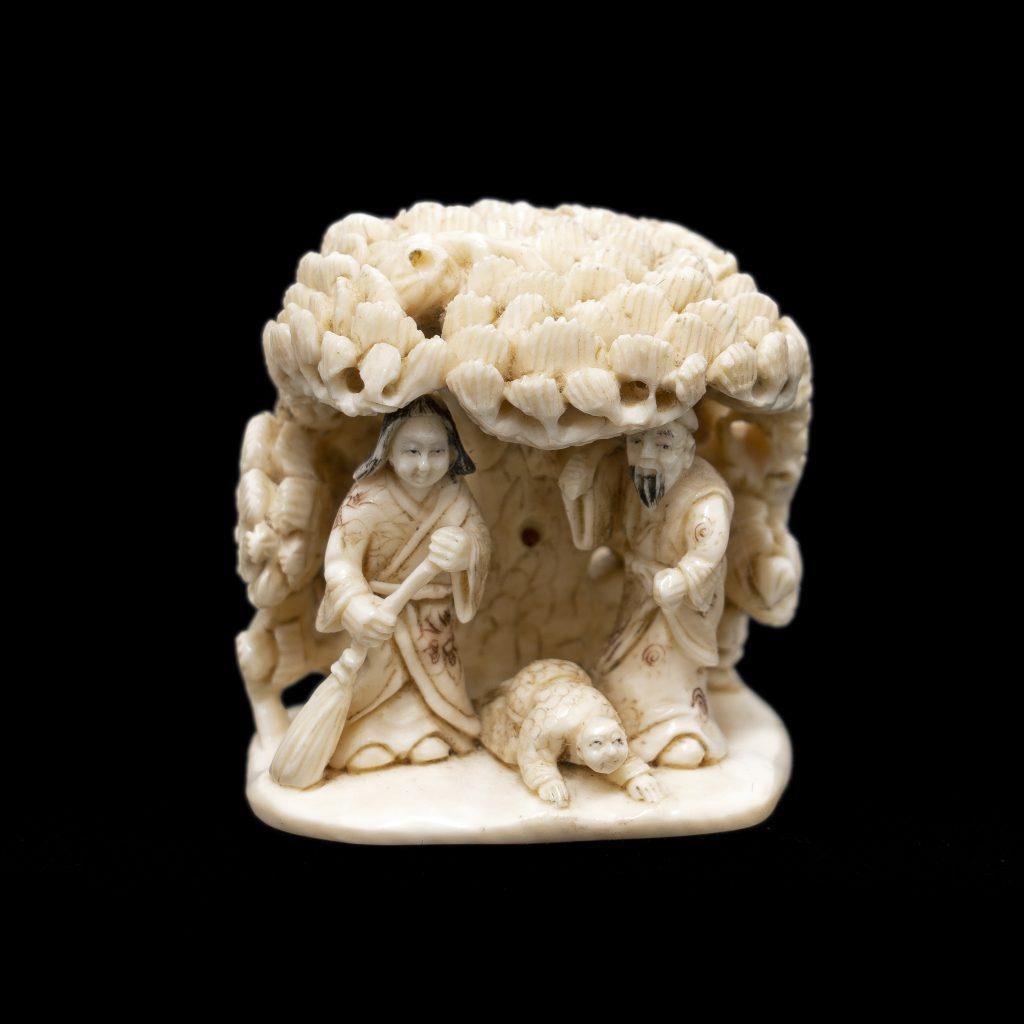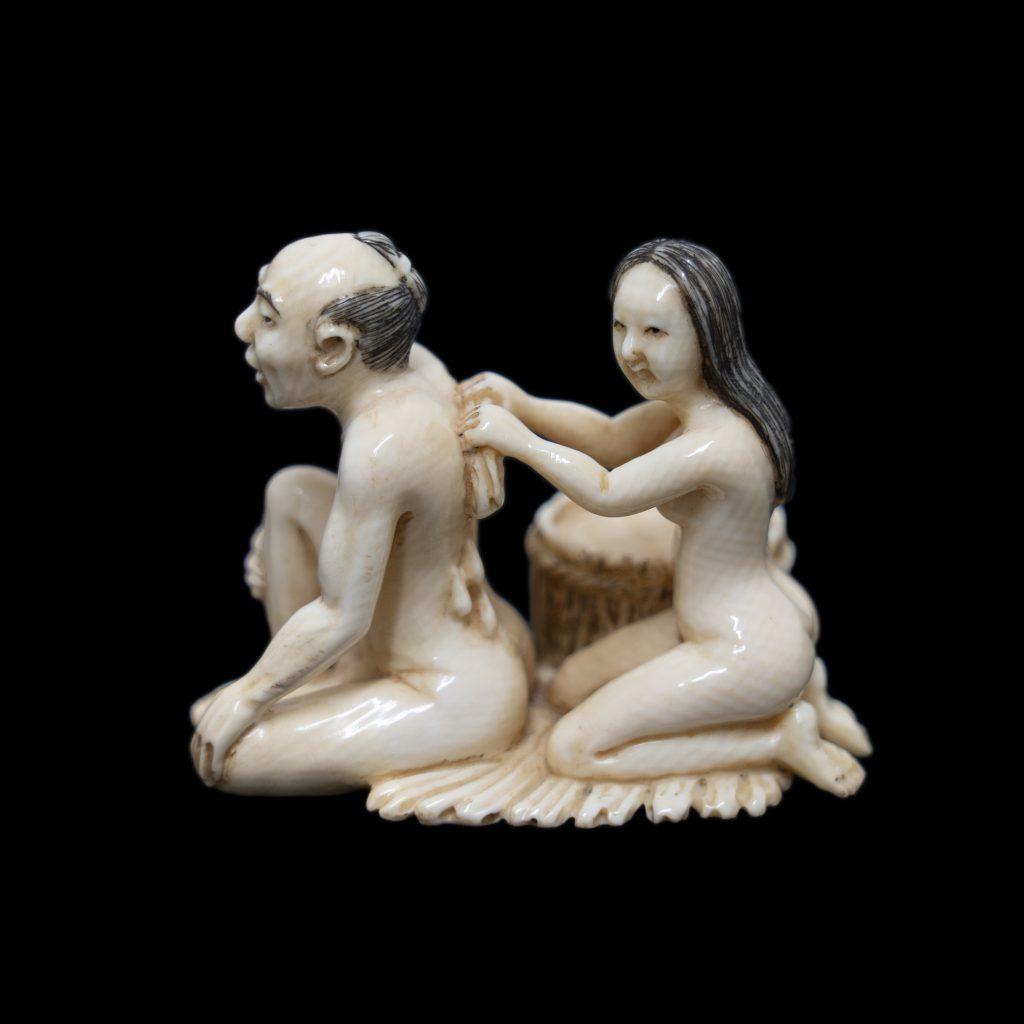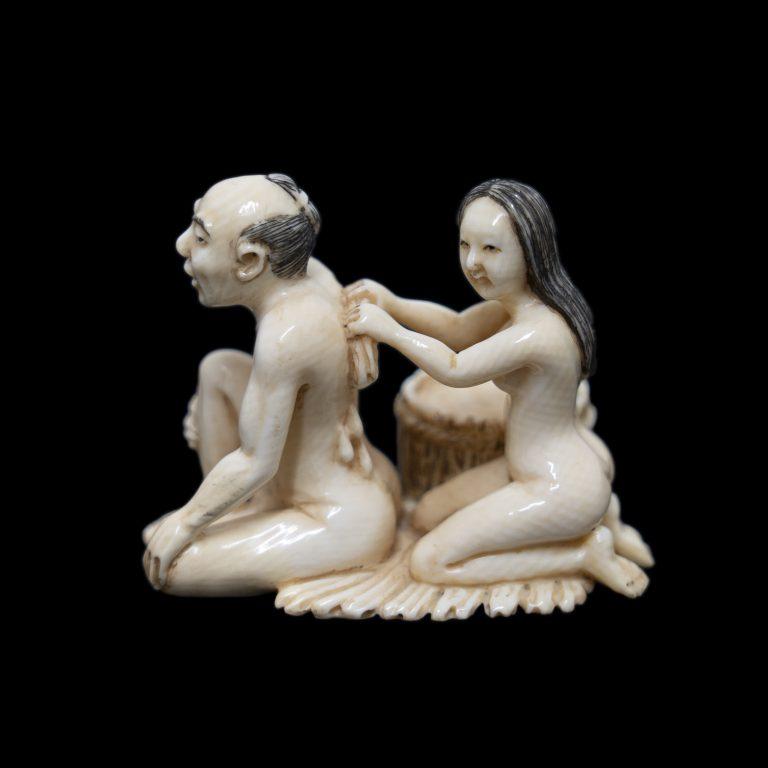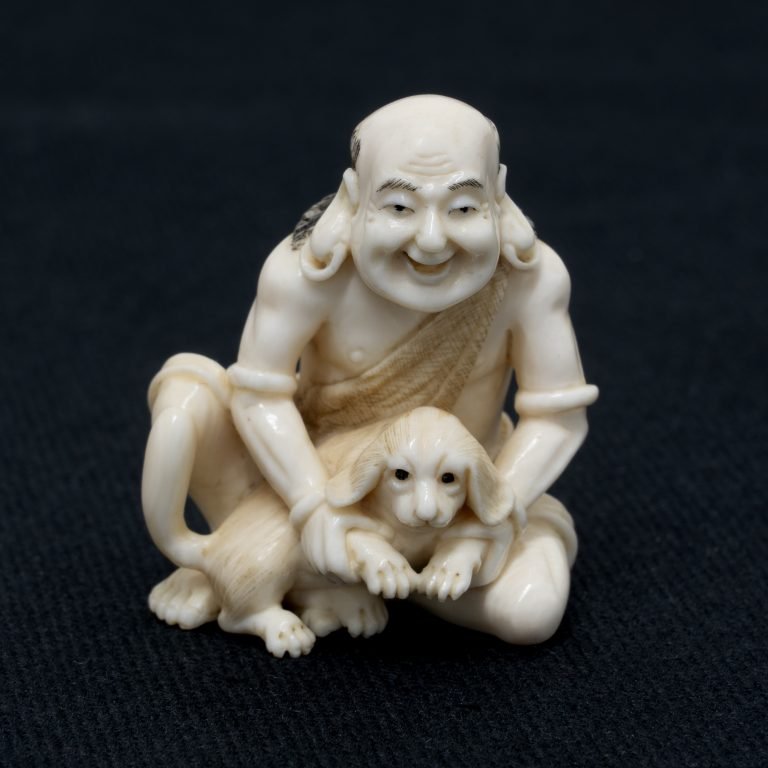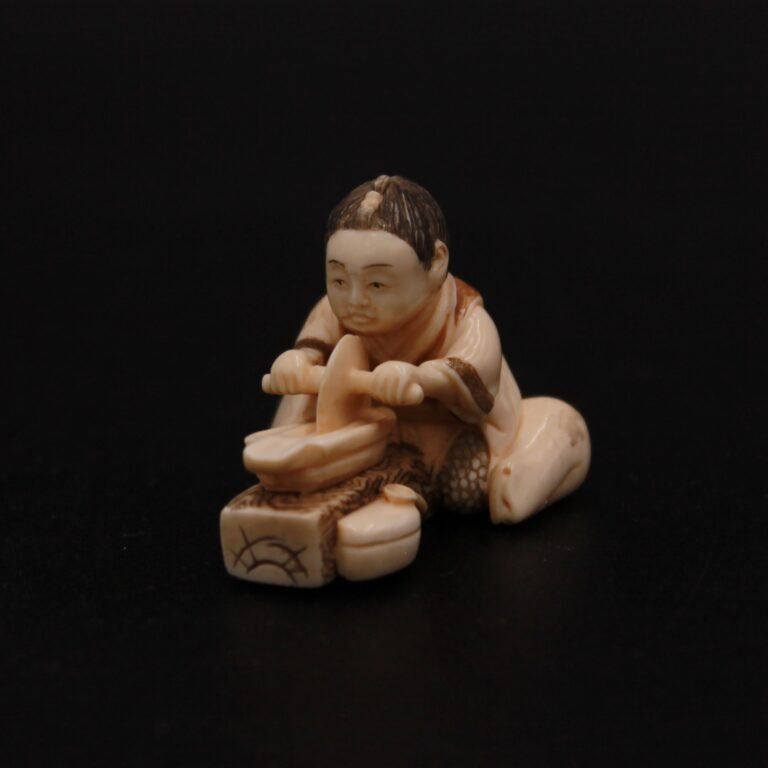
This Japanese term is formed from the characters “ne” meaning root and “tsuke” meaning attach. The initial use of netsuke was to fasten different traditional daily objects – like a medicine box, a seal case, an inrō – to the obi, the waist sash tied over a pocketless kimono.
Originally Chinese, the netsuke – along with the kimono – was adopted by the Japanese in the 18th century. From then on, Japanese artisans have turned what used to be an ordinary fragment of shapeless root into an exquisite piece of art enchanting collectors.
No longer indissociable from the kimono, the netsuke has become an objet d’art of its own. The themes netsuke depict are most diverse, varying from animals to religious symbolism. The netsuke carver’s deftness is such that we sometimes fail to realize how so much can be portrayed and conveyed out of so little material.
Our collection consists of over 1,000 netsuke crafted by hand out of bone, boxwood, and mammoth ivory.
We recommend Victor-Frédéric Weber’s excellent book entitled Ko-ji Hô-ten, Dictionnaire à l’usage des amateurs et collectionneurs d’objets d’art japonais et chinois (French Edition).
Discover more...
If you are interested, please contact us by email or phone. We will be delighted to answer all your questions.




